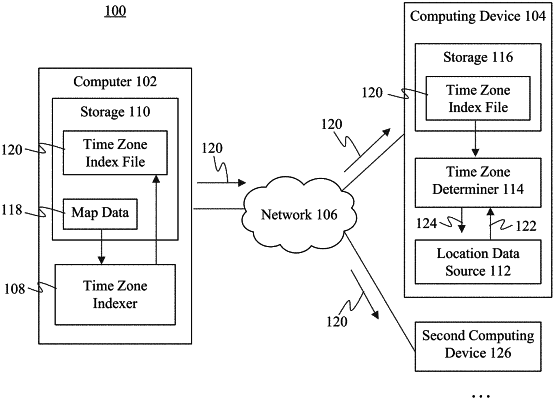| CPC G04G 9/0076 (2013.01) [G04R 20/00 (2013.01); H04W 4/021 (2013.01)] | 20 Claims |

|
1. A mobile user device, comprising:
a location data source that provides location information that indicates a location of the mobile user device;
at least one processor circuit; and
at least one memory that stores program code configured to be executed by the at least one processor circuit, the program code comprising:
a threshold region determiner configured to determine a first movement threshold region as a portion of a first time zone polygon containing the location of the mobile user device, the first movement threshold region determined based on a distance between the location of the mobile user device and an edge of the first time zone polygon closest to the location of the mobile user device;
a trigger generator configured to monitor movement of the mobile user device within the first movement threshold region; and
a time zone edge monitor configured to:
trigger a position change event based on a determination that an edge of the first movement threshold region is reached by the mobile user device, and
in response to the determination that the edge of the first movement threshold region is reached by the mobile device, determine that an edge of the first time zone polygon is not reached by the mobile user device;
wherein the threshold region determiner is further configured to determine a second movement threshold region as a second portion of the first time zone polygon containing an updated location of the mobile user device, the second movement threshold region being different than the first movement threshold region.
|